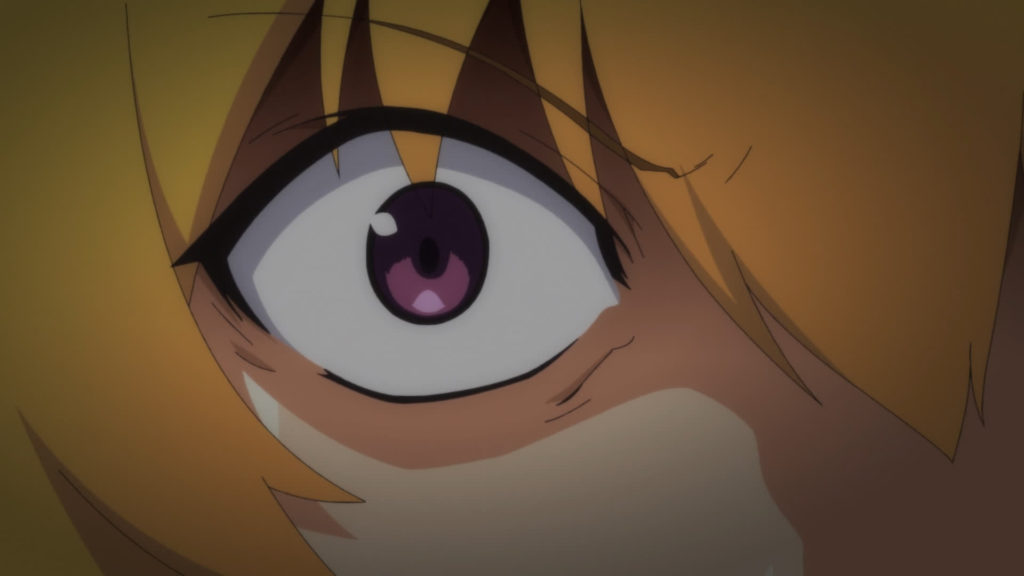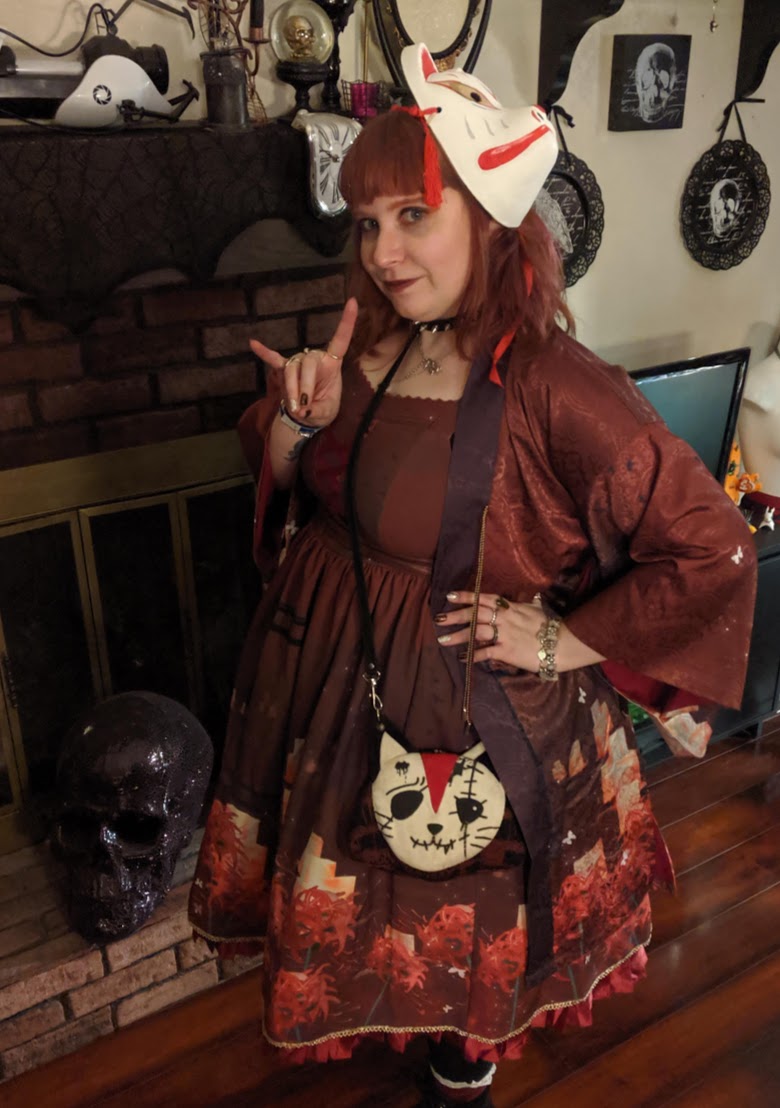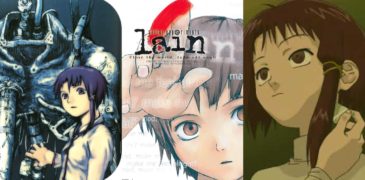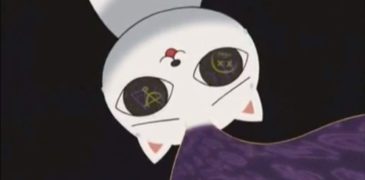
With the latest Higurashi series wrapped up as of just last week, it’s time for a spoiler-filled review for the fans that want to dissect the heart (and other organs) of the most recent entry. Consider yourselves warned.
Gou (translated as New) took us and the franchise into very new territory with its twenty-four episodes. At first, we rehashed some arcs from the previous iterations with slight differences, but at the second episode we met Hanyū, letting us know something big was happening with this sequel series. Rather than simply being more visual novel style question and answer arcs, all of the loops throughout all of the series have been not only intentional and connected, but purposeful.

Poor Rika has been living out the horrors of Hinamizawa for one hundred years! Not only has she been doomed to repeat the events, but she actually managed to escape, age, and find another, happier fate for herself before being sent back. Rika doesn’t properly maintain her memories close to death, so while she is able to make changes to the loops, she doesn’t remember how she died or who killed her each time, making it much more difficult to get winning outcomes.
We continue with this strategy for a while, reliving past arcs as we know them, as present loops for Rika. She makes small changes in each, attempting to change her fate. We get some more background into Hinamizawa syndrome as canon, which gives us final answers into the initial cause of the arcs from the prior series. Then, the “Village Destroying Chapter” starts at episode eighteen.
With this chapter, we’ve survived nearly all of the gore. Sure, there’s a spattering here and there (pun intended). Yet the epic murder montages are no more. As Rika finds herself able to dream of a proper future and escape Hinamizawa, Satoko won’t accept it. We’ve seen what that life could be like in the “Cat Deceiving Chapter”, and know that Rika gets sent back to Hinamizawa. Yet to find out that her beloved best friend is the one that has doomed her to one hundred years of incomprehensible suffering?

The “Village Destroying Chapter” that closes out the series was what completely blew my mind. The lengths that Satoko would go to for someone she “loved”, yet clearly hated. Her consuming obsession and how others felt the influences of the loops. The way all of the prior pieces of media tied together and made sense, but in a new and condemning way.
I felt so uncomfortable, but not from the gore or shock factors. The scenes with Satoko and her uncle clawed at me. They balanced every aspect so precariously so that I didn’t know which emotion to feel, which reaction to have, so I had them all. Likewise, each time I thought Satoko would come around and remember her love for her friends, find a sense of guilt at the long-term damage she knew she was inflicting, find her sense of self, she did not. Do I think she’s irredeemable at this point? I really don’t know. She’s also a victim, too, and carries the damage from loops within her, even before she actively remembered them. Still, it’s a tough question….
I also loved the way the series was handled. The original score and initial themes were used from the last anime, with an art style that was updated, but still felt true to the original. A new studio and team were used, but due respect was paid to the source material. It was obvious that the intent was to give us more Higurashi content, but not a reboot or update. As a serious fan of the franchise, I appreciated the admiration and integrity that the team used to make it feel like a smooth continuation.

Ryukishi07, the original creator of the franchise, also wrote and supervised Gou, including Easter eggs for fans familiar with his other Higurashi storylines. At the end of the final episode, Sotsu was announced as the next Higurashi series to air, coming in July 2021. Ryukishi07 is rumored to be writing it, as well, and it will be a direct sequel to Gou.
Which arc was your favorite in Gou? Which character? Have your opinions of any characters significantly changed after this series? Please let me know in the comments!
More Anime Reviews:
Highschool of the Dead (2010) Anime Review – Blood, Guts & Anime Tiddies
There are a number of different things that can separate anime fans in their enjoyment of the medium; sub or dub, manga or anime or the go-to for any DBZ…
Serial Experiments Lain (1998) Video Game Review – Welcome Back to the Wired
Even after all these years, Serial Experiments Lain remains a cult-classic anime for many. With only 13 episodes and a ton of unanswered questions, fans still want something more of…
[April Fools] Chimamire no Gakuen (1988): We found the Saki Sanobashi Sequel!
Here at Yurei, we have brought the search for Saki Sanobashi to our audience’s attention many times. Unfortunately, until now, it hasn’t been productive at all. We have discussed how…
Cat Soup (2001) Review – A Surreal Trip Through a Dark Landscape
Synopsis: Based off the manga of the same name, Cat Soup follows the misadventures of two siblings as they struggle for survival in a bizarre and dangerous landscape. Largely free of…
Mermaid Forest (1991) Anime Review – Murmaider
Mermaid Forest is a 1991 anime OVA adapted from Rumiko Takahashi’s manga Mermaid Saga, published from 1984 to 1994. Directed by Takaya Mizutani and produced by Pierrot, the anime was…
Persona 3 The Movie #2 (2014) Anime Review – Midsummer Knight’s Dream (2014) Review – Battlefield Unconscious
Atlus’s Persona series is a critically acclaimed video game franchise which depicts a group of high-school students battling creatures known as Shadows by using “Personas.” Personas in this context are…

Hello, I’m Quinn. Saying I’m deeply into fashion and Japanese culture is an understatement. We’ve renovated entire rooms of our house to dedicate to my collections of lolita and other Japanese fashions. I enjoy balancing the cute with the macabre, and the more disturbing it is, the more I’ll enjoy it. Thus, my love for Asian horror and manga was born. Thank you for taking the time to read my writings. I look forward to discussing films and aesthethics with you!


![[April Fools] Chimamire no Gakuen (1988): We found the Saki Sanobashi Sequel!](https://www.grimoireofhorror.com/wp-content/uploads/2024/03/sasA-365x180.jpg)


